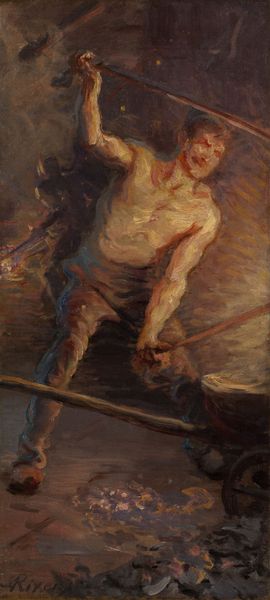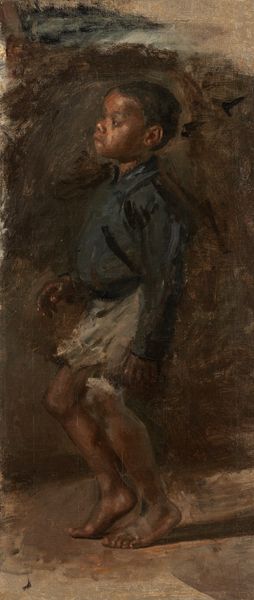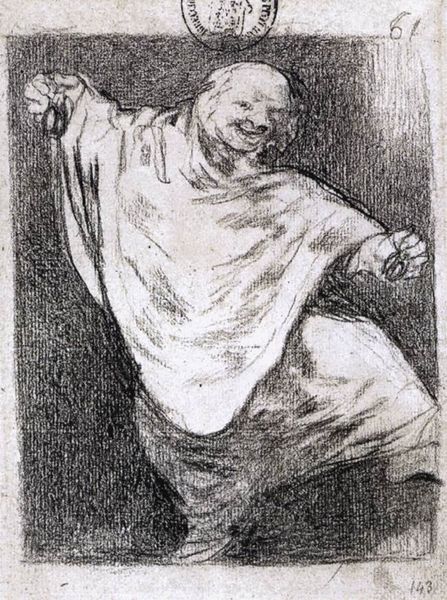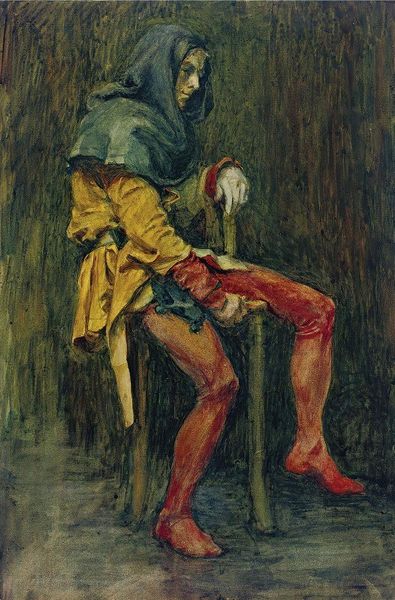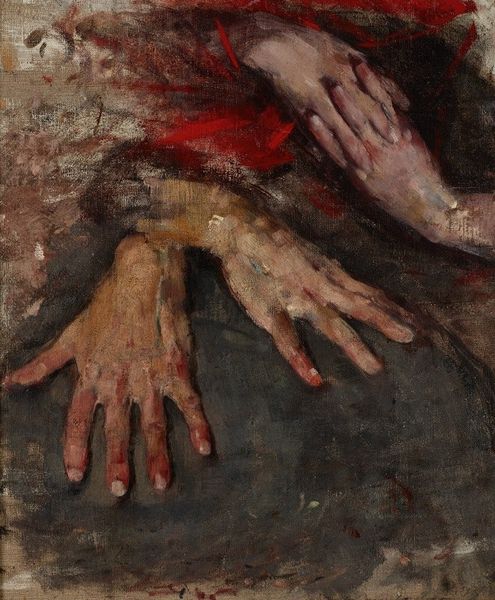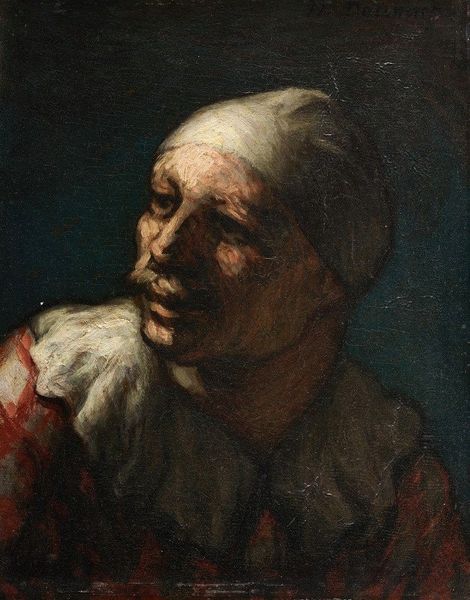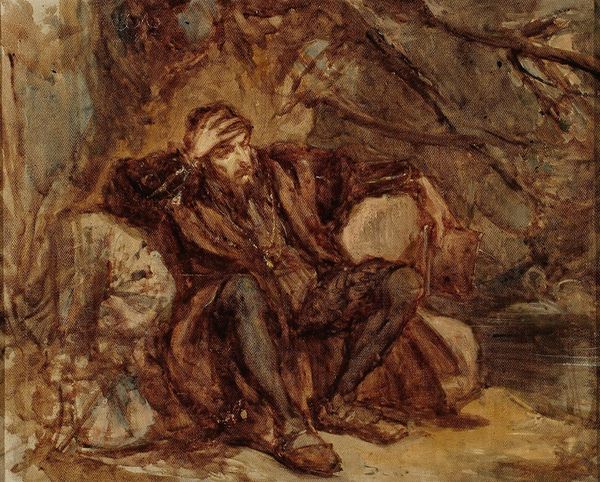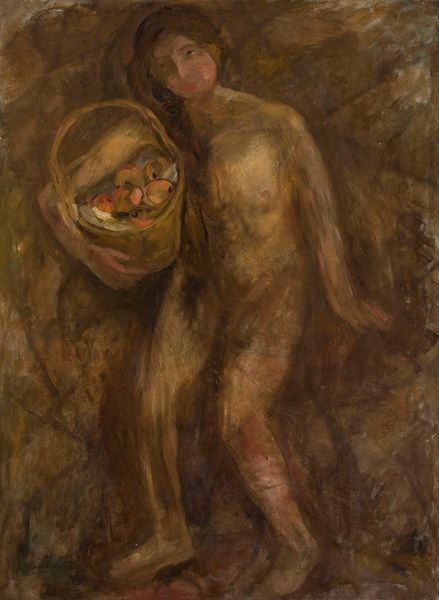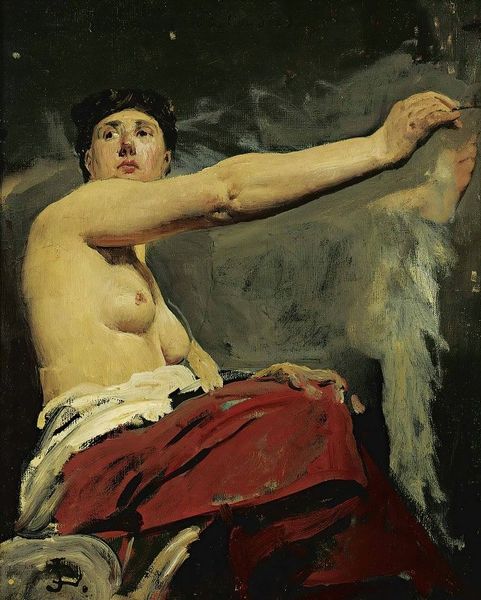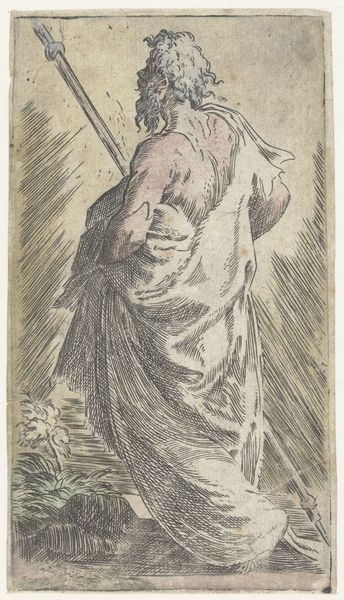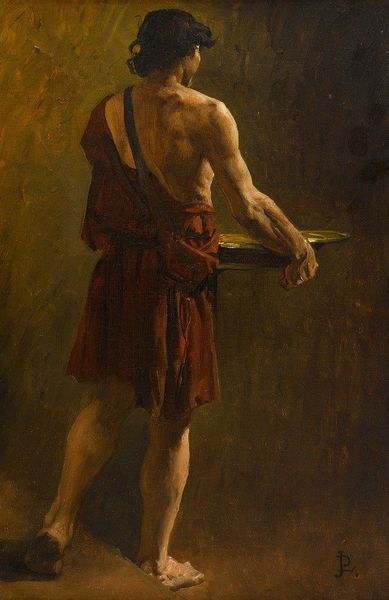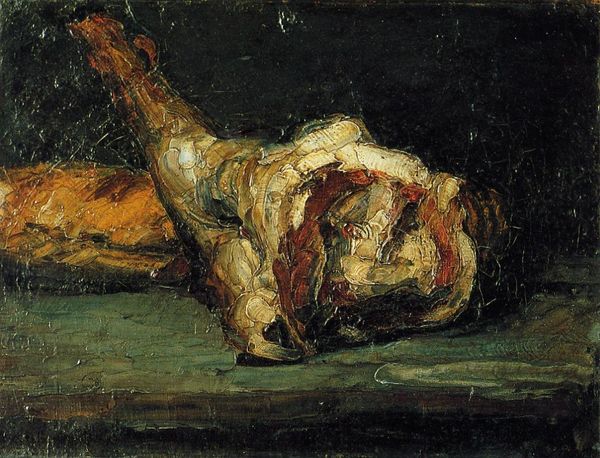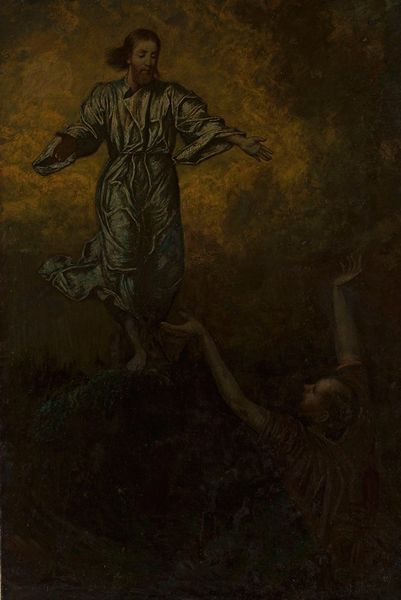
painting, plein-air, oil-paint
#
narrative-art
#
painting
#
plein-air
#
oil-paint
#
figuration
#
oil painting
#
romanticism
#
painterly
#
genre-painting
#
history-painting
Dimensions: 13 3/8 × 8 3/8 in. (33.7 × 21.3 cm)
Copyright: Public Domain
Curator: Domenico Morelli painted this artwork, titled "The Gladiator," in the 19th century. You can find this oil-on-canvas piece here at the Art Institute of Chicago. What are your initial thoughts? Editor: The brushwork is so energetic. You can practically feel the grit of the arena under his feet. There's a real sense of weight in the body language, too. Look at how Morelli has modeled the drapery and the light falling across his skin – it seems to suggest so much struggle. Curator: Indeed. It evokes the broader historical context of 19th-century Romanticism, when there was fascination with classical subjects and historical themes that offered grand narratives about heroism, sacrifice, and human drama. Do you believe this painting represents these themes? Editor: Absolutely. What's striking, though, is how Morelli seems to be emphasizing the physical burden of the spectacle. He's focused less on glorifying combat. I find myself thinking about what a life in this industry means to his body. The gladiator seems almost ready to collapse; look at how Morelli paints the rough canvas. Curator: The choice of medium also contributes to this effect. Oil paint allows for a build-up of texture that accentuates the grittiness you mentioned. Also, consider Morelli’s place in Neapolitan painting. How did he manage to display critical themes through paintings and still satisfy the academy? Editor: It certainly pushes against typical academic painting; I think Morelli does a phenomenal job in showcasing the cost to the human body imposed by an inherently materialist practice. There is such physicality to the rendering here. The subject, the art industry. He does manage to deliver this statement powerfully. Curator: These historical paintings held great social power. Art allowed difficult subjects like war, political oppression, and more to come into light. That certainly plays an important role in shaping a painting’s value beyond purely artistic components. Editor: Right, the materiality serves a purpose, creating this vivid expression. It's fascinating how both the physical and cultural circumstances become intertwined and deeply impact each other. Curator: Absolutely. The painting serves as a powerful example of this, inviting us to reconsider our perception. Editor: I couldn't agree more. There is so much here, and now I will walk away and reconsider some other Gladiator paintings.
Comments
No comments
Be the first to comment and join the conversation on the ultimate creative platform.
